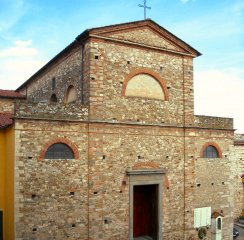
Parrocchia
Santi Pietro apostolo e Marco evangelista
Pieve a Nievole
Memorabilia
Pilgrim’s Cross
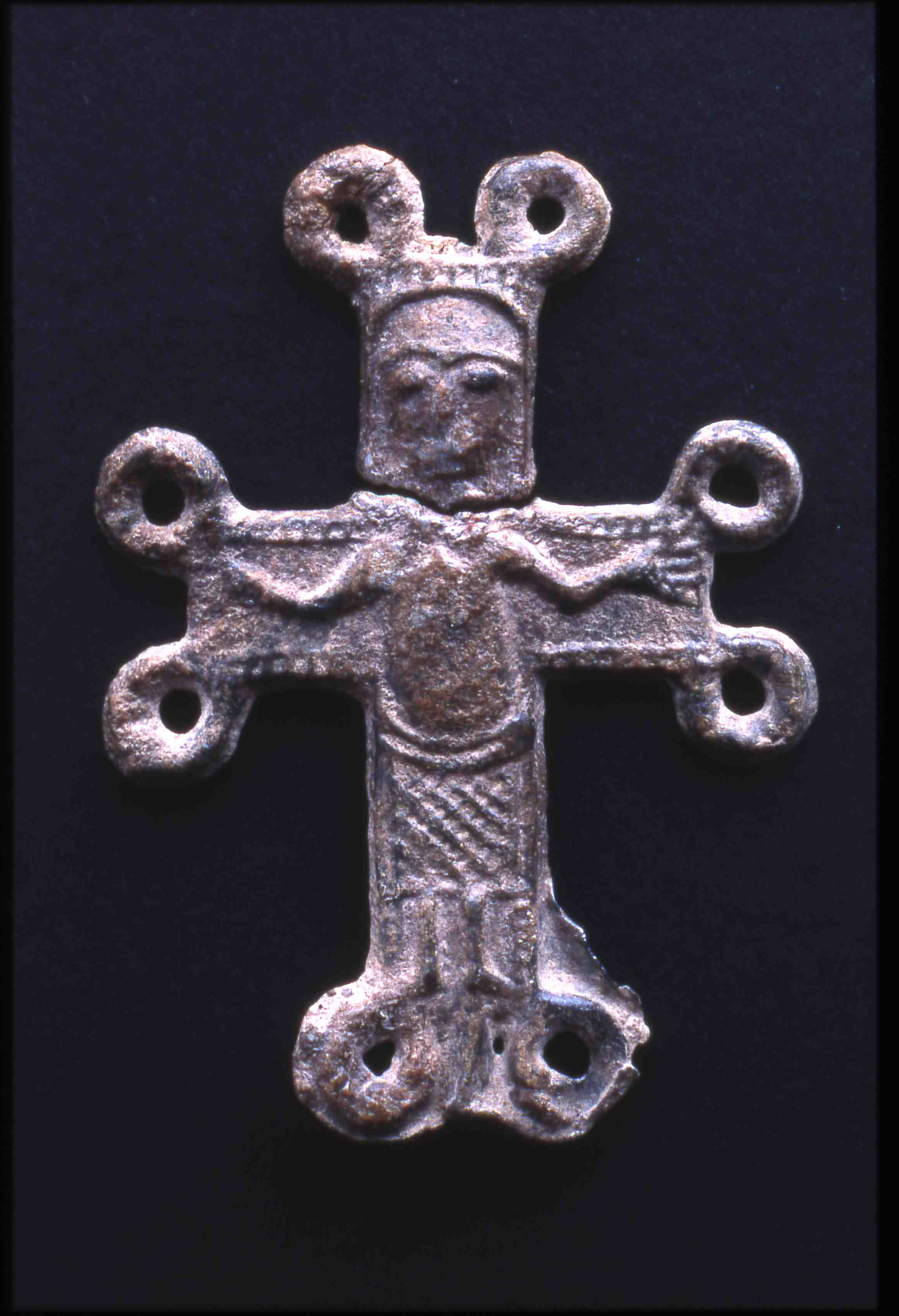
From the 1997 archaeological dig, a find came to light. It was a tiny (mm 45x32), molten lead cross of no historical significance, commonly worn by pilgrims, found in a burial site which dates back to the early 12th century. A pilgrim on his way is likely to have passed away here in Pieve and he must have been buried with his own cross in the churchyard. An ordinary story from the past suggesting that the ancient church was a well-known leg located on the several pilgrimage walks. History and faith are highly related: that is why the cross has been chosen to be the parish's logo, which is nowadays used as its official seal. Currently the cross is hold in a small golden case in the sacristy.
Ancient Venetian Coins
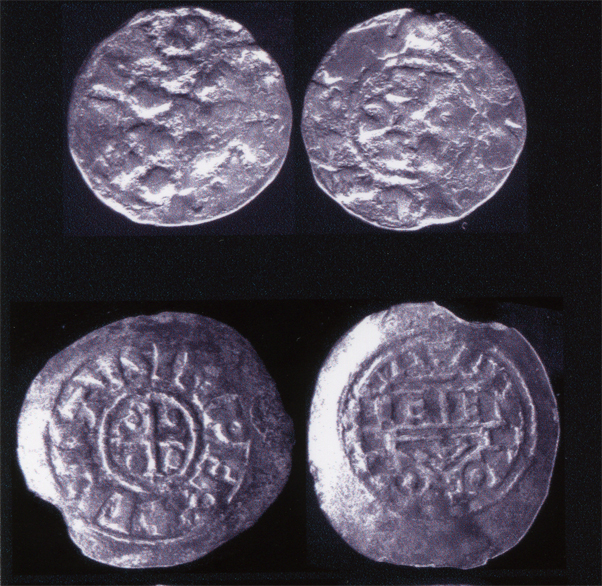
The discovery of a "secret locker" astonished those who
were working at the excavation process in 1997-98.
The storage room's old and worn out screed needed to be replaced and when it was
removed many objects were found there, among them some silver coins. Thanks to
additional salvaging and restoring work and further studies (G. Ciampoltrini, E.
Pieri, Archeologia a Pieve a Nievole, Pisa 2004), the twenty-six silver
coins have been said to be from Veneto and dated between the 10th and 11th
century. This collection represents a relevant numismatic evidence in terms of
chronological dating.
At the moment the coins are being kept at the Larciano Museum.
At the moment the coins are being kept at the Larciano Museum.
Augustinian Goblet
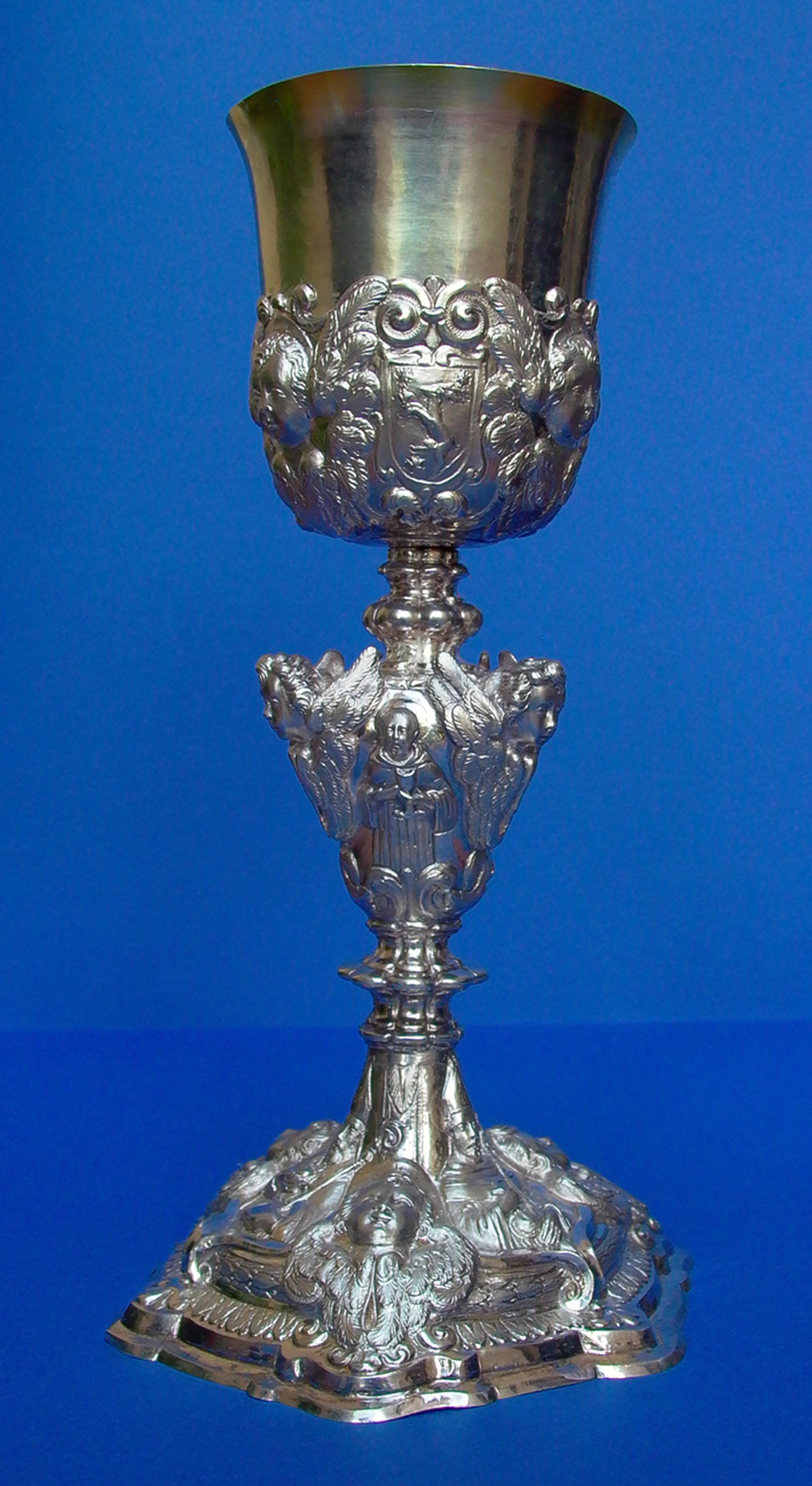
Nothing do we know about the reason why such a precious and high-quality silver goblet is lying in this church.
According to Elisa Maccioni's recent studies (Un esempio di suppellettile sacra post-conciliare: il calice della chiesa dei Santi Pietro e Marco a Pieve a Nievole, in "Quaderni pievarini" (5), Pieve a Nievole 2007), the goblet is to be ascribed to the early 17th century Augustinian environment.
The item constitutes a suitable evidence for the characteristically post-Tridentine goldsmith techniques.
Monstrance Reliquaries
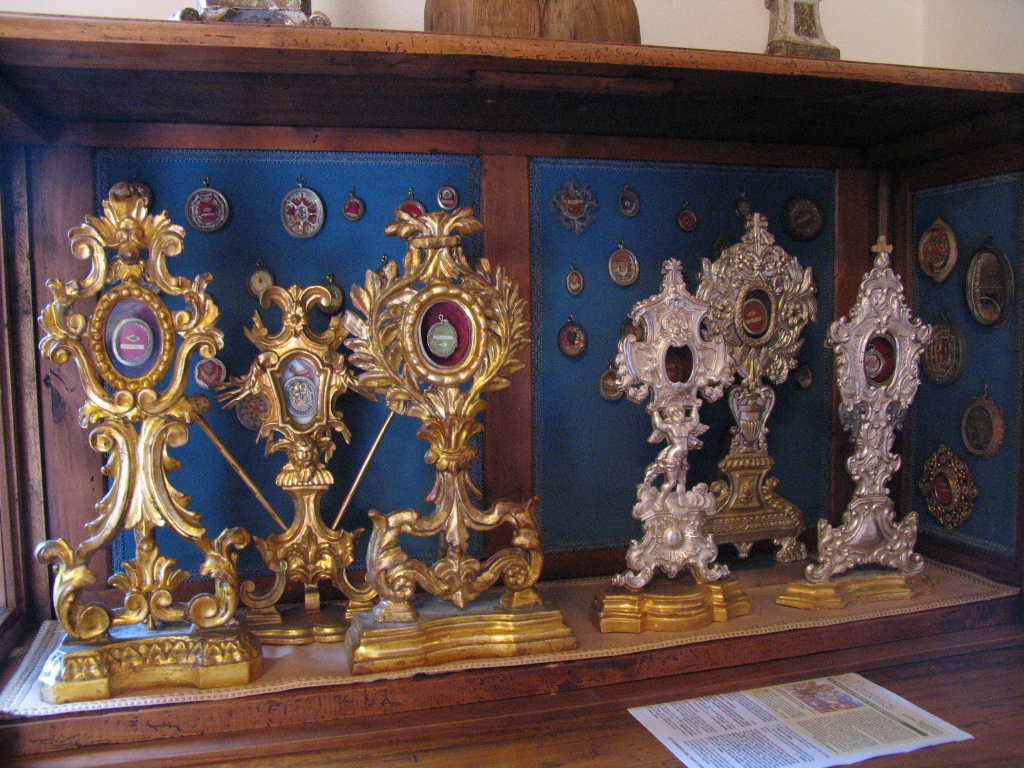
Being part of the church's estate, the relics are kept in an explicitly built
bespoke furniture located in the sacristy. For further information about the
relics detailed descriptions and concerning documentation demonstrating their
authenticity, please refer to Quaderni Pievarini, periodical of the research
centre "Centro studi storici San Pietro a Neure", a voluntary association which
fosters local history knowledge. The association was originally set up by parish
will, now it is an independent body
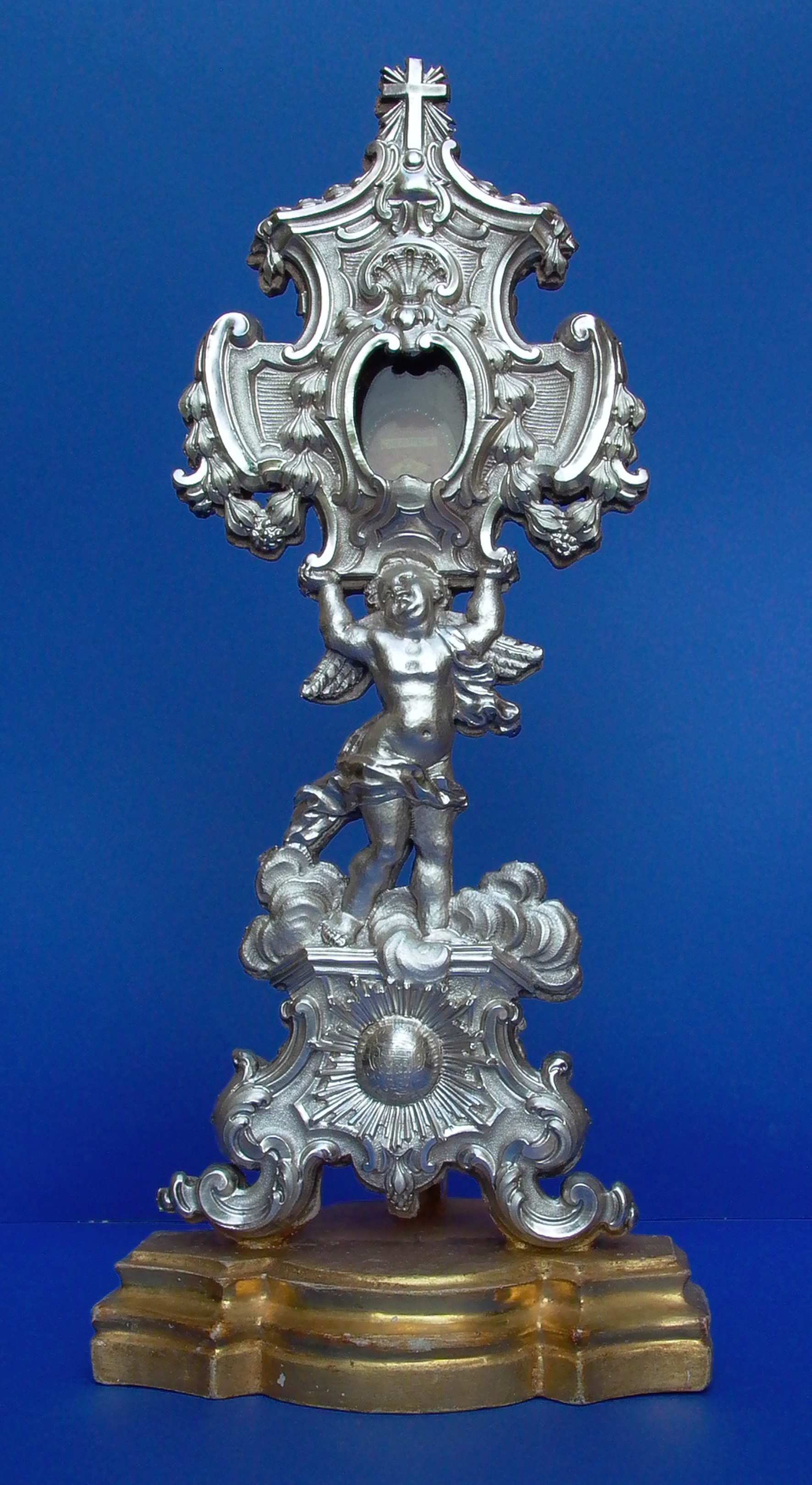
Besides the relics' devotional feature, which is certainly
the most important one, not to be overlooked is the artistic side: in this regard,
in addition to the ordinary craftsmanship wooden silver and gold-plated
reliquaries, there exists a silver embossed and chiseled leaf one, whose artistic
value is considerable.
Like the others it is a monstrance reliquary, but it depicts an angel bearing over his head the case where the Saint's relic is exhibited.
Florentine Pitti family's noble coat of arms on the item means to suggest that the artifact is likely to have been a gift from Villa Amerighi, a country manor of property of the Pittis, not far from the church.
The item is dated 1734 on the back.
Like the others it is a monstrance reliquary, but it depicts an angel bearing over his head the case where the Saint's relic is exhibited.
Florentine Pitti family's noble coat of arms on the item means to suggest that the artifact is likely to have been a gift from Villa Amerighi, a country manor of property of the Pittis, not far from the church.
The item is dated 1734 on the back.
Ex voto exhibit Cases
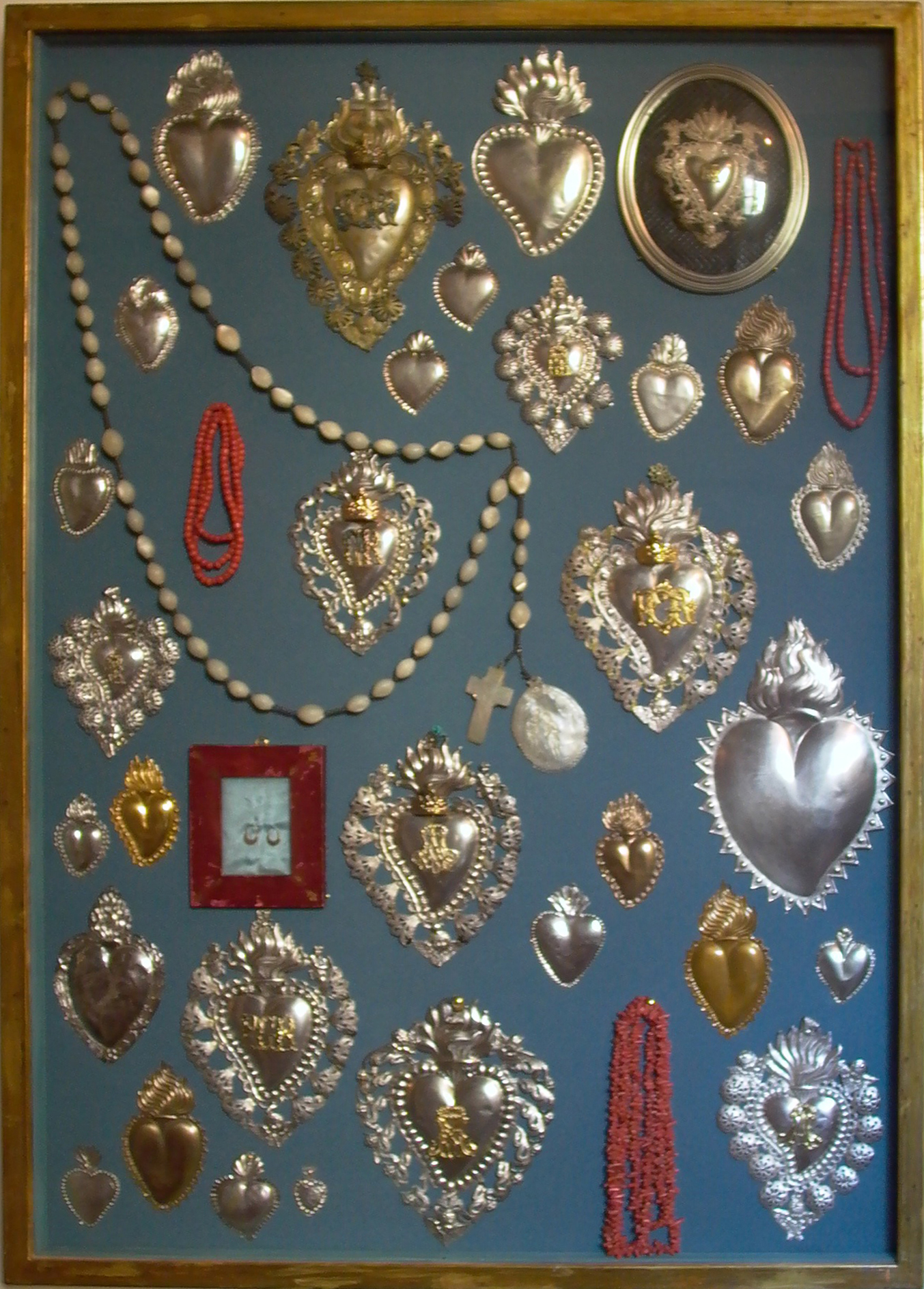
The hallway connecting the sacristy to the parsonage houses three large cases preserving and exhibiting the several ex-votos or thanksgiving vows for the grace received which had gathered throughout the centuries. Although they are humble, simple and low-grade material objects with no artistic significance, these items reveal at the same time a deep devotional meaning. They are indeed evidence of a mere and deep faith, intended to leave a significant memento of people's own gratitude in spite of the sacrifices they undoubtedly made, given the high-poverty back then. The objects cover a period of time starting from the 17th century up to the present day. They are mainly related to Marian devotions, few of them to the Sacred Heart cult.
Cesare Tronci's Pipe Organ
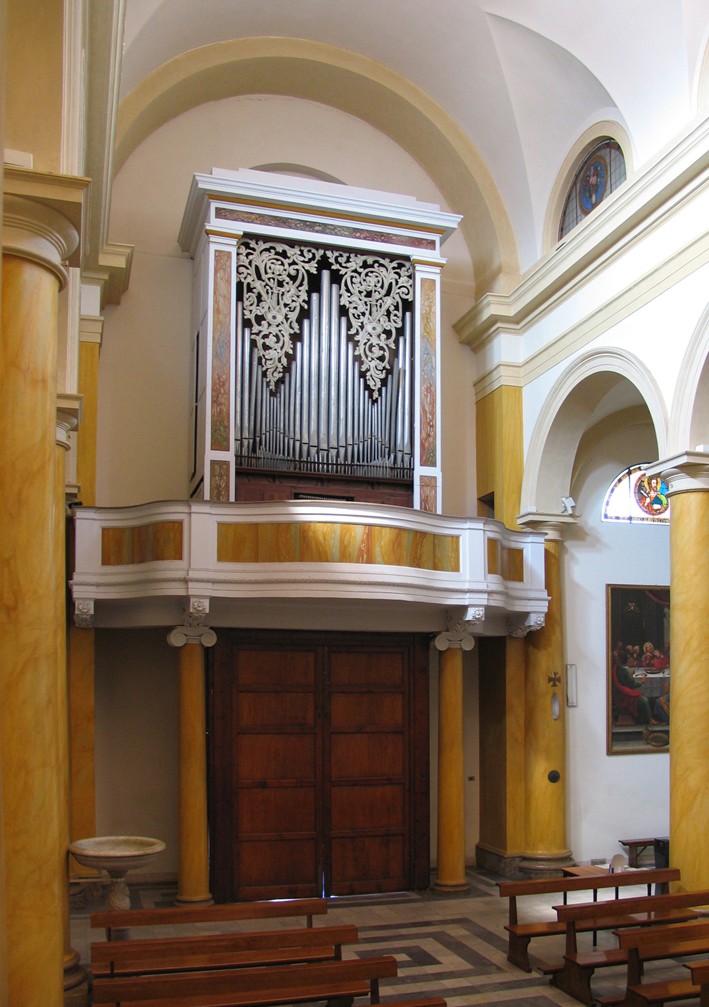
The large pipe organ lies in the choir loft, which is
located on the parish church's counterfacade. This is the largest pipe organ
ever built in Valdinievole by the organ-builders family Troncis. In spite of
long researches, there exist no records about the instrument's history, except
for an inner scroll bearing the name of Cesare Tronci, making it possible to
certify who the builder was. Having the church been finished in 1846 and given
that Cesare Tronci company ceased its activity in 1870, we can date the organ
shortly before 1870 and say that it is the result of Tronci's deft hand. The
organ's restoration work has a troubled history: a first attempt was made in 1984,
but nothing was done at that time due both to public institutions' insensibility
and individuals' lack of interest: the first and only effective restoration
occurred in 2009. The organ was inaugurated on 24th April 2009 and
since then many concerts have been performed, as well as initiatives for the
promotion like the liturgical organist school.
Below you can find the organ's ranges:
- Principale nei bassi
- Principale nei soprani
- Principale secondo basso
- Principale secondo soprano
- Ottava nei bassi
- Ottava nei soprani
- Duodecima
- XV
- XIX
- XXII - XXVI
- XXIX - XXXIII
- Nasardo basso
- Nasardo soprano
- Viola nei bassi
- Contrabbassi
- Trombe basse
- Trombe soprane
- Clarone nei bassi
- Clarinetto
- Bombarda soprana
- Cornetto nei soprani
- Voce angelica soprana
- Flauto in ottava nei bassi
- Flauto in ottava nei soprani
- Flauto di abete basso
- Flauto in abete soprano
- Corni dolci
- Ottavino nei soprani
- Flautino basso
- Campanelli
- Banda
- Tamburo I e II
- Terza mano
- Usignolo
- Tasti organo n� 32 4 ottave + 4 note div. fa/fa diesis
- Pedaliera: scavezza 1 ottava + 5 note Do - Sol + tamburi + terza mano
NB - N.B. All the references to Quaderni Pievarini and Atti Tavole Rotonde can be downloaded from www.sanpietroaneure.it, our historical studies centre website.
 Paintings
Paintings